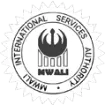Diversification: Mitigating Risk Through Portfolio Breadth
Diversification is a cornerstone principle of successful investing. It involves spreading your capital across various asset classes to reduce the overall risk associated with your portfolio. Here's where commodities come in:
- Uncorrelated Asset Class: Commodity prices often exhibit limited correlation with traditional asset classes like stocks and bonds. This means that when stocks or bonds experience a downturn, commodity prices may not necessarily follow suit, potentially offering some portfolio protection and stability.
- Hedging Potential: Commodities can be used as a hedge against inflation. As inflation rises, the prices of commodities tend to increase as well, potentially offsetting the purchasing power erosion of your other investments.
- Broader Market Exposure: By incorporating commodities into your portfolio, you gain exposure to a fundamental driver of the global economy. The demand for commodities is intrinsically linked to industrial production and economic activity, offering a unique diversification opportunity.
Inflation Hedge: Protecting Purchasing Power
Inflation, the sustained increase in the price of goods and services, can erode the purchasing power of traditional investments like cash and bonds. Commodities, however, often exhibit a positive correlation with inflation. Here's how they can help:
- Historical Performance: Historically, commodity prices have tended to rise during periods of inflation. This price appreciation can help preserve the purchasing power of your investment capital.
- Tangible Assets: Commodities represent real, tangible assets, unlike stocks or bonds that are financial instruments. This tangible nature can offer some protection against inflation, as the value of the underlying commodity itself tends to hold relatively steady over time.
Economic Indicators: Gaining Insights into Global Activity
Commodity prices act as leading indicators of economic activity. By monitoring price trends, you can potentially gain valuable insights into the health of the global economy and make informed investment decisions:
- Supply and Demand Dynamics: Commodity prices reflect the interplay of global supply and demand. Rising prices might indicate an expanding economy with increased demand for raw materials, while falling prices could signal a potential economic slowdown.
- Geopolitical Events: Political instability in resource-rich regions can disrupt supply chains and drive up commodity prices. Monitoring these events can help you anticipate potential market shifts and adjust your investment strategies accordingly.
Risk Management Strategies: Implementing Effective Controls
While commodities offer diversification and inflation-hedging benefits, they also carry inherent risks. Here's how to manage these risks effectively:
- Market Volatility: Commodity prices can be highly volatile due to various factors like weather events, geopolitical tensions, and economic fluctuations. Implementing stop-loss orders and maintaining a well-defined risk management strategy is crucial.
- Leverage: Many brokers offer leverage when trading commodities. While leverage can amplify potential profits, it can also magnify losses. Utilize leverage responsibly and understand the associated risks before employing it.
- Research and Analysis: Thorough research on the specific commodity you're considering, its historical price movements, and the factors influencing its price is essential before making any investment decisions.
Beyond the Basics: Advanced Considerations for Commodity Trading
For those seeking a deeper understanding of commodity trading, here are some additional concepts to consider:
- Trading Strategies: Explore various trading strategies like trend following, technical analysis, and fundamental analysis to identify entry and exit points for your trades.
- Trading Instruments: Beyond physical commodity purchases, various instruments like futures contracts, options contracts, and commodity ETFs offer ways to participate in the commodities market.
- Risk Management Techniques: Techniques like diversification across different commodities, hedging strategies, and position sizing can help mitigate risk and protect your capital.
Conclusion
The commodities market offers a dynamic and potentially rewarding avenue for investors seeking to diversify their portfolios, hedge against inflation, and gain exposure to a fundamental driver of the global economy. However, it's crucial to remember that commodity trading also carries inherent risks. By understanding the benefits, managing risks effectively, and adopting a well-defined investment strategy, you can position yourself for potential success in this exciting market arena.







